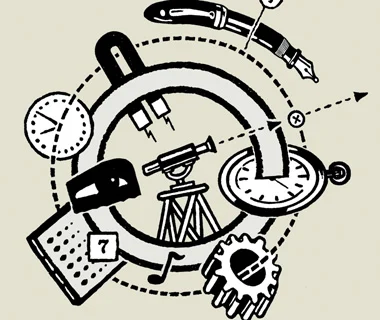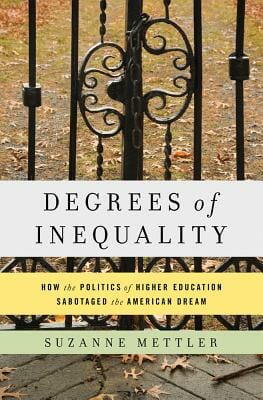Polarizing Plutocracy: Our Broken Higher Education System

The American political system is broken, and one unmistakable sign of it is our inability to bring down soaring levels of student debt or to regulate predatory for-profit colleges. The best solution the Obama administration has been able to propose in this area is a college ratings system that would evaluate colleges on the basis of factors like graduation rates and graduates’ earnings and debt loads.
Frankly, the idea that a ratings system will fix what ails American higher education is a little nuts. It views education as if it were a market like any other, and treats colleges like consumer products. “It’s like rating a blender,” burbled Education Department official Jamienne Studley last week to the New York Times. But while blenders can be tested in a lab, employment statistics can be all too easy to game, as anyone who’s followed recent reporting about bogus law school employment rates can attest.
By taking an approach to regulation that emphasizes “transparency” of information, the Obama administration also places the burden of evaluating schools on students and their families. Less affluent students, who often are poorly advised during the college application process in general, won’t fare particularly well under this system. A more aggressive approach is needed to protect them from the predatory for-profits. For many in this group, far more generous financial aid is needed to make going to college an economically rational decision in the first place.
But the biggest fundamental problem with the administration’s proposed ratings system is that it presents market principles as the cure for an illness that is itself caused by the indiscriminate application of market-mad nostrums to a context (education) where they don’t belong.

How did student debt become a crisis, and why is the only political solution being proposed so hopelessly inadequate? An excellent recent book provides some sobering answers. Suzanne Mettler’s Degrees of Inequality (Basic Books, 261 pages, $27.99) makes the case that the American system of higher education, which once provided a pathway of upward mobility for millions of Americans, is “evolving into a caste system with separate and unequal tiers” that leaves students “more unequal than when they first enrolled.” Mettler, a political scientist at Cornell University, emphasizes that although a college education is more important than ever to achieve a foothold in the middle class, college graduation rates for the bottom half of the income distribution have been stagnant since the 1970s.
For affluent students, an elite college education represents a crucial opportunity for networking and resume-building on their paths to prosperity and success. But students from low- and moderate-income families are finding it increasingly difficult to complete their bachelor’s degrees, even when they boast academic qualifications identical to their wealthier counterparts. Indeed, one study cited in Mettler’s book showed that a student with high test scores from a low-income family is no more likely to graduate than a low-scoring rich kid. Research has identified rising tuition in public colleges as the chief reason for lower college completion rates among the less well-off.
Mettler points to the decline in federal student aid and the states’ diminishing commitment to public higher education as major factors driving these increasingly unequal outcomes. But perhaps the most unsettling sections of Mettler’s book concern the rise of for-profit colleges. It’s hard to say anything good about these blood-sucking institutions. They prey on veterans and the poor, whom they lure with deceitful advertising and high-pressure recruiting techniques.
Mettler writes that, “Out of fifteen colleges investigated by the [federal] GAO [Government Accountability Office], thirteen provided deceptive information to applicants” that implied “guaranteed jobs” and “inflated earnings” for graduates. Recruiters at some schools have been ordered to sign up anyone who qualifies for a student loan. One recent report cites slimeball recruiting tactics that include enrolling the mentally disabled (including one man with ”a second-or third-grade” reading level) and manipulating an applicant’s religious guilt.
The statistics are staggering: 94 percent of for-profit bachelor’s degree students borrow, and only 22 percent manage to graduate. The for-profit grads suffer worse outcomes than other college graduates, experiencing significantly lower earnings and higher rates of unemployment. They also rack up a shocking levels of debt (the median debt is $33,000), with 23 percent of them defaulting on loans within three years. And while the for-profit colleges merrily go about bankrupting their students, they’ve been a financial bonanza for their owners and shareholders. The for-profits are enormously lucrative; the largest of them are publicly traded on Wall Street and remained profitable even when the stock market plunged during the 2007-08 financial meltdown.
There’s an additional dimension of horror to this disturbing portrait, and that’s the fact that the immiseration of the for-profits students, and the simultaneous enrichment of their shareholders, are being bankrolled almost entirely by the U.S. taxpayer. Indeed, the fifteen largest for-profits get 86 percent of their funding from public sources—such as student grants and loans, and military education programs—a cool $32 billion annually.
It wasn’t always this way. Between 1998 and 2006, during the era of high neoliberalism, Congress loosened regulations on the for-profits; that’s when the feeding frenzy began. Mettler’s term of art for the political process that drove the deregulation mania is “polarized plutocracy.” In a political climate where Democrats and Republicans are ideologically more far apart than ever, even policies that enjoy broad popular support—such as cracking down on the taxpayer-funded for-profit college scam—go nowhere. But there’s one cause that perennially motivates Democrats and Republicans manage to their differences aside and pull together in a heartwarming show of bipartisanship: the interests of the rich.
As Mettler shows, in our not-so-distant past, Americans had the decency to be outraged at education scams of the sort perpetrated by the for-profits’ predecessors. Following World War II, the G.I. Bill’s education provision gave rise to exploitative trade schools. Newspapers ran muckracking exposés into the matter. Congress launched investigations and then actually followed through with legislation that put the crooked schools out of business. The notion that veterans who had served their country were the victims of these rip-offs had seemed particularly offensive to many Americans. But that was during a time when we had a draft, and American men of all classes were conscripted into military service. Today, veterans are overwhelmingly people from working class backgrounds—which may contribute to lawmakers’ reluctance to fight for their interests and against the for-profit schools that prey upon low-income Americans.
Many neoliberals believe that low college enrollment is one of the chief causes of economic inequality. Mettler’s book poses a serious challenge to this theory. She provides strong evidence that higher education is ossifying our society into a class system that leaves many lower-income Americans who participate in it worse off, not better. Powerful monied interests dominate the political process that shapes education policy. To make our higher education system functional once again, those interests must be fought, not appeased. The Obama administration’s tacked-on ratings system unfortunately does the latter more than the former.